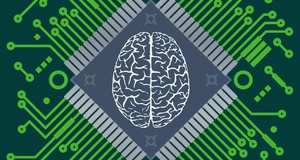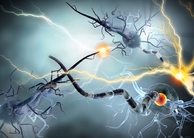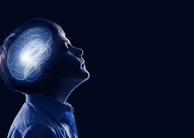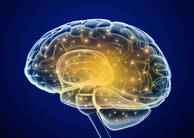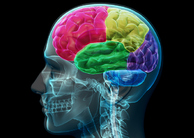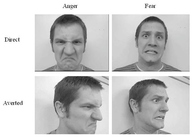Are Isochronic Tones Effective? The Impact of Isochronic Tones on Brainwave Entrainment and Stress
By
2020, Vol. 12 No. 11 | pg. 1/1
IN THIS ARTICLE
AbstractIsochronic tones are a hypothesized auditory brainwave entrainment technique in which a single tone is played at regular beat intervals. Brainwave entrainment, also referred to as neural synchronization, is a phenomenon by which external stimuli influence neural oscillations related to specific cognitive states (Siever, 2012). Though Isochronic tones are commercially marketed as effective in brainwave entrainment, there is limited empirical investigation to date to substantiate this claim; this is particularly true of alpha cortical entrainment via isochronic tones. The current study examined the lasting effect of 8 Hz alpha isochronic tones on subjective stress, via Larsson’s (2011) ESRQ, and absolute alpha band power, via an EEG. Sixty undergraduates were randomly assigned to listen to a song containing or absent of isochronic tones in a double-blind procedure. Participants completed a pre-ESRQ and EEG analysis, listened to their assigned song for five minutes, then completed a post-ESRQ and EEG analysis to measure for changes as a result of the presence or absence of isochronic tones in their assigned condition. A Mann-WhitneyU (Mann & Whitney, 1947) showed no significant difference (p = .509) in subjective stress between isochronic conditions. A two samplet-test showed a significant difference (p = .020) in absolute alpha band power, indicating a greater presence of absolute alpha in the absence of isochronic tones and contradicting the hypothesized effectiveness of isochronic tones. The purpose of the current study is to investigate the effectiveness of isochronic tones in stress reduction and auditory brainwave entrainment. Isochronic tones are produced by oscillating the amplitude of any sound off and on at a specific rate – normally a rate equivalent to that of a desired brainwave state (Huang & Charyton, 2008). For example, a sine wave set at any harmonic frequency oscillating off and on eight times per second (8 Hz) in an attempt to entrain the brain to the alpha state (8 – 10 Hz) is an example of an alpha isochronic tone. Brainwave entrainment, also known as neural synchronization or cortical entrainment, refers to the use of frequency-specific rhythmic stimuli, either visual or auditory, to influence the production of brainwaves that match the frequency of the stimuli (Ray, 2017; Siever, 2012; Will & Berg, 2007). There are five demarcated brainwave states: delta, theta, alpha, beta, and gamma (Gao et. al 2014). For the purposes of this study, we examined the role of audio entrainment via isochronic tones set within the alpha frequency range (8 – 10 Hz).While there is an increasing amount of evidence for the validity of auditory brainwave entrainment via other techniques such binaural beats, there is limited evidence for the effectiveness of isochronic tones to illicit neural synchronization (Lustenberger, Boyle, Foulser, Mellin, & Frohilich, 2015; Shealy et. al, 1990; Siever, 2012). There is a large quantity of isochronic tone MP3s easily accessed online which promise a variety of mental health benefits. One of the most common benefits advertised is stress reduction via alpha isochronic tones. The alpha brainwave state has been measured as ranging between 8 - 12 Hz (Gao et al., 2014; Huang & Charyton, 2008). Current academic literate has expressed a variety of associations between the presence of the alpha brainwave state and cognitive tendencies such as, but not limited to: decreased symptoms of depression, increased hemispheric coherence in the frontal lobe, and increased creativity (Alexander et. al, 2019; Frederick, Timmermann, Russel, & Lubar, 2005; Lustenberg, et. al, 2015). The alpha brainwave state has also been associated with a relaxed, calm, yet alert, state (Huang & Charyton, 2008). The alpha brainwave state naturally arises when an individual has either just fallen asleep, awakened, or when an individual has reached a state of relaxation and/or meditation (Schuman, 1980). It is the association between the alpha brainwave state and relaxation that is of particular interest to the present study due to the contrast in the physiology of relaxation and that of stress. As previously mentioned, there is mixed evidence for the effectiveness of auditory brainwave entrainment via a separate technique known as binaural beats (Ala, Ahmandi-Pajouh, & Nasrabadi, 2018; Brady & Stevens, 2000; Goodin et al., 2012; López-Caballero & Escera, 2017; McConnell, Froeliger, Garland, Ives, & Sforzo, 2014; Morse & Chow, 1993; Pluck & López-Águila, 2019; Vernon, Peryer, Louch, & Shaw, 2014). Gao and colleagues (2014) showed binaural beats set at the alpha frequency of 10 Hz elicited an increase in participant alpha cortical readings. In this study, participants listened to the alpha binaural beats for 5 minutes with their eyes closed. Within 1.5 minutes, there was a measured increase in activity within the alpha cortical band (Gao et. al 2014); however, this increase in alpha may have been a result of the participants’ eyes being closed rather than from any entrainment produced by the binaural beats. Previous research has shown that closing the eyes naturally increases the presence of absolute alpha in the brain (Barry, Clarke, Johnstone, Magee, & Rushby, 2007). Foster (1990) found that participants exposed simultaneously to alpha binaural beats and alpha biofeedback showed a significant increase in the alpha cortical band in comparison to those who received biofeedback only – indicating that alpha binaural beats may be successful in entraining the brain to an increased alpha state. However in a separate study, Kasprzak (2017) obtained contrasting results in a similar study. Kasprzak (2017) exposed participants to alpha, beta, theta, and delta binaural beats for 20 minutes and measured for changes in participants brainwave states following the 20 minute exposure. The results showed a statistically significant increase in the theta frequency band following exposure to theta binaural beats, no significant changes in the delta frequency band following exposure to delta binaural beats, and surprisingly, a statistically significant decrease in the alpha and beta frequency bands following exposure to alpha and beta binaural beats (Kasprzak, 2017). A meta-analysis completed by Huang and Charyton (2008) looked at 22 peer-reviewed studies on binaural beats that investigated a variety of topics ranging from cognition and learning, to stress and anxiety. They concluded that, although there is competing evidence on the effectiveness of binaural beats in brainwave entrainment, and although more research needs to be done to validate the effectiveness of auditory brainwave entrainment, “[auditory brainwave entrainment] is worthy of further consideration by clinicians and researchers as a therapeutic tool” (Huang & Charyton, 2008, p. 48). Given the contradicting evidence on the effectiveness of auditory brainwave entrainment via binaural beats in inducing specific brainwave states, as well as the suggested physiological effects of auditory brainwave entrainment as it relates to stress, the current study intends to add to the body of research investigating the possibility of entrainment via specific auditory stimuli. The potential for auditory brainwave entrainment, via isochronic tones, to reduce stress within its listener is important given the amount and effects of stress in our culture. A 2017 study by American Psychological Association found that 58% of United States Americans over the age of 18 reported feeling significant stress as a result of the current political and social climate of the United States (American Psychological Association, 2017). That same study found that 45% of United States Americans reported losing sleep as a result of their stress (American Psychological Association, 2017). As many studies have shown, stress carries a multitude of negative and harmful side effects including a decrease in academic performance (Nadeem, Ali, Maqbool, & Zaidi, 2012), increased heart problems (American Psychological Association, 2018), increased health problems throughout all age ranges (Dalton, Hammen, Brennan, & Naiman, 2016), increased unhealthy social interactions (Crinc, Greenberg, Ragozin, Robinson, & Basham, 1993), a decrease in immune system functioning (Khansari, Murgo, & Faith, 1990), etc. The National Mental Health Association estimates that stress related work absence costs American businesses $500 billion annually (Hellebuyck, Nugyen, Halphern, Fritze, & Kennedy 2017). Furthermore, during the current COVID-19 global pandemic, there is a growing body of research revealing a significant increase in psychological stress resulting in harmful effects on mental health and interpersonal relationships (Johannesen, 2020; Wu et. al, 2020). Given that auditory brainwave entrainment, set at a variety of frequencies, has shown some evidence in reducing stress and anxiety within the listener (Huang & Charyton, 2008; Padmanbhan, Hildreth, & Laws, 2005), it is hypothesized that isochronic tones, set within the alpha frequency range, will produce similar reductions in stress, if they are in fact effective in entraining the brain to specific cortical states. The current study intends to investigate the effect of alpha isochronic tones on stress, as measured and defined via the Larsson’s (2011) Emotional Stress Reaction Questionnaire (ESRQ), and brainwave entrainment. Larsson’s (2011) ESRQ was designed to measure immediate stress levels following exposure to stressful stimuli. The ESRQ has been found to be effective in measuring stress as it relates to secondary appraisal, coping processes, personality, and “various outcome indices such as performance” (Larsson, 2011; p. 1). The ESRQ was selected to measure stress for the purposes of the current study due to its quick and efficient evaluation time; it takes roughly 30 seconds for a participant to complete the entire ESRQ. For the purpose of the current study, brainwave states were recorded via the Muse 2, a wearable Bluetooth headband that measures and records both absolute and relative cortical band activity. The Muse 2 is the second generation of the original Muse Bluetooth EEG headband, which has been shown to be effective in accurately measuring neural activity (Abujelala, Abellanoza, Sharma, & Makedon, 2016). For the current study, only data pertaining to absolute overall alpha and absolute overall theta, as discussed further in the results section of this manuscript, were attended to. Based on all previously mentioned research, it is hypothesized that the presence of isochronic tones set at a 10 Hz (alpha) frequency over a five minute period, will increase participant alpha brainwave activity, and create lower levels of reported stress via the ESRQ in participants who were exposed to the isochronic tones. The current study will examine the immeditate effects of isochronic tones, rather than long term (i.e., daily) use. Because isochronic tones are most often used within music when sold commercially, the current study imbedded the isochronic tones within a five minute song. The hypothesis concerning brainwave entrainment is that the presence of alpha isochronic tones will increase absolute overall alpha in the brain. The null hypothesis concerning brainwave entrainment is that the presence of alpha isochronic tones will have no impact on overall alpha in the brain. The hypothesis concerning stress is that the presence of alpha isochronic tones will decrease self-reported stress following exposure to the isochronic tones. The null hypothesis concerning stress is that the presence of isochronic tones will have no impact on self-reported stress following exposure to isochronic tones (see Appendix A). MethodologyThe aim of the current study was to investigate the effect of isochronic tones set at the 8 Hz alpha frequency range on immediate stress response and entrainment to the alpha brainwave state. Stress response was measured via the ESRQ (Larsson, 2011), while brainwave states were measured via a Muse 2 Bluetooth EEG. ParticipantsThe current study recruited 60 undergraduate students from a small liberal arts university via convenience sampling. Participants with any history of epilepsy or tinnitus were eliminated from testing to ensure participant safety and comfort. Participants signed an informed consent approved by the Institutional Review Board of the university and were compensated with research credit. Participants were tested individually, with a between-subjects design, and were randomly assigned to either a control group (absent of isochronic tones) or experimental group (isochronic tones present) via Microsoft Excel’s random generator function. Thirty participants were assigned to each condition. The experiment employed a double-blind design to ensure the highest quality of empirical investigation and reduce experimenter and participant bias. ProcedureParticipants were brought into a quiet room to be tested. Participants first reviewed the informed consent sheet. Participants who consented and signed the informed consent were then notified that in completion of the study they would undergo an EEG analysis and respond to a survey, as well as listen to a five minute song. However, participants were kept blind to the aim of the study to minimize the chances of a response set. The Muse 2 Bluetooth EEG headband was attached to participants once the informed consent was completed. They were informed of the function of the headband. A 30 second reading was taken to establish a baseline alpha cortical state prior to any auditory stimuli exposure. During the recording process, participants were asked to keep their eyes closed, relax their face muscles, and refrain from moving their head or neck in order avoid noise and inaccurate EEG readings. Participants were then asked to complete an adapted version of the Emotional Stress Response Questionnaire (ESRQ; Larrson, 2011). This established a baseline subjective stress level prior to any exposure to the stimuli. After completing the baseline measures, participants were then instructed to wear headphones and listen to an MP3 file of a song over a five minute period. They were instructed to keep their eyes open while the song was playing. The purpose of this was to control for the confound of a natural increase in the alpha cortical band when one’s eyes are closed for a prolonged duration. The song they listened to either contained, or was absent of, isochronic tones depending on the assigned condition of the participants. The experimenter was kept blind as to the assignment of each participant to avoid experimenter bias. The isochronic tones were set at -5 dB in comparison to the song to avoid irritation, but to still allow the isochronic tones to be fully audible. Participants were instructed to adjust the volume of the audio track to a level which was audibly clear but comfortable. The isochronic tones were set to an oscillating amplitude frequency of 8 Hz, setting it within the alpha frequency range. The carrier frequency of the isochronic tones was a sine wave set at 432 Hz. After listening to the song for five minutes, participants were instructed to remove the headphones. Immediately following the full exposure to the auditory stimulus, a second 30-second EEG reading was taken to measure for any changes in brainwave states following the exposure the auditory stimuli. After the EEG reading, participants completed a second ESRQ to measure for changes in stress levels following exposure to the auditory stimuli. Upon completing the final survey and analyses, the researcher debriefed the participant, thanked them for their time and cooperation, and answered any final questions. At this point, the aim of the study was provided if the participant expressed interest. MaterialsAbleton Live 10 Suite was used to create both the song and isochronic tones. Within Ableton Live, the alpha isochronic tones were created using an operator synthesizer set at a 432 Hz sine wave. An autopan with a zero degree phase, set at a sine wave oscillation frequency of 8 Hz followed the operator. Finally a low-pass filter was applied to remove any harmonics greater than 700 Hz to allow the tones to pierce the mix more adequately. The isochronic tones and song were presented to the participant via Apple earbuds connected to a MacBook Pro. Participant brainwave states were measured via a Muse 2 Bluetooth EEG headband that displayed and recorded data on an iPhone 6S. The ESRQ was printed on paper and responses were indicated via circling each response with a pen (see Appendix B for a complete list of materials). ResultsRoughly 80 inter-trial coherence (ITC) measures were collected via each 30 second EEG reading (baseline and post-treatment). The Muse 2 (via the Muse Directä app) averaged each of the ITC measures over each 30 second period. Though the Muse 2 records data ranging from all cortical bands, both relative and absolute, only the data relevant to absolute overall alpha and theta were used. The averages of the baseline EEG ITCs (prior exposure to the five minute song) were subtracted from the post-treatment EEG ITCs (following exposure to the five minute song) to calculate a change in the absolute alpha and absolute theta cortical bands. The ESRQs were scored and the baseline ESRQ was subtracted from the post-treatment ESRQ to measure for changes in self-reported stress levels. The ESRQ is an interval variable ranging from a possible score of -21 (high stress) to +21 (low stress). The alpha statistic was set to 0.05 for all inferential analyses. An Anderson-Darling test for Normality (Anderson & Darling, 1954) was used to test if the data were normally distributed. The Anderson-Darling test indicated that ESRQ data were on the border of being normally distributed, so the Mann-Whitney U (Mann & Whitney, 1947) was used to test for differences between the samples (being presence of alpha isochronic tones and absence of alpha isochronic tones) because the data were discrete and truncated, and the sample size was large. The Mann-Whiney U indicated no significant differences between the samples ( p = .509); however, exposure to the song did result in participants reporting a reduction in stress for both conditions (uPresence = + 2.1; uAbsence = + 2.8; see Appendix C for a visual representation of data). An Anderson-Darling (Anderson & Darling, 1954) was used to test for normal distribution of the absolute alpha ITC readings. The data was found to be normally distributed, thus a two-Sample t-test (Cressie and Whitford, 1986) was used to test for differences in the means of the two conditions (one being presence of alpha isochronic tones, the other being absence of alpha isochronic tones). A Levene’s Test for Equal Variances (Levene, 1961) was used to test if the two-sample t-test was in need of modification. The Levene’s Test indicated unequal variances, so no modifications to the t-test were employed. A significant difference between the means was indicated (p* = .020) by the two-sample t-test. The absence condition showed a mean decrease of .007 (u = -0.007) in the absolute alpha cortical band. The presence condition showed a mean decrease of 2.11 (u = -2.11) in the absolute alpha cortical band (see Appendix D for a visual representation of data). Because 8 Hz sits on the border of the alpha and theta frequency ranges (Alpha: 8 - 11.99 Hz; Theta: 5 - 7.99 Hz; Huang & Charyton, 2008), the theta cortical band was also analyzed. Once again, an Anderson-Darling Test for normality (Anderson & Darling, 1954) was used to test for normal distribution of the data. The data was found to be normally distributed, thus a two-sample t-test was used to test for differences in absolute overall theta between the samples. A Levene’s Test (Levene, 1961) was again used to test for equal variances. The variances were found to be unequal, thus, no modification was employed to the t-test. No significant differences were found between the means of the conditions (p = .832). The absence condition showed a mean decrease of 0.084 (u = -0.084) in the absolute theta cortical band. The presence condition showed a mean decrease of 0.096 (u = -0.096) in the absolute theta cortical band (see Appendix E for a visual representation of data). DiscussionThe pattern of results permitted a rejection of the null hypothesis regarding brainwave entrainment, but not in favor of the alternative hypothesis, as the opposite was found to be true. As the data showed, there was a decrease in absolute overall alpha in both conditions. But, in the condition containing isochronic tones, there was a significantly greater decrease in the presence condition (containing isochronic tones) than in the absence condition (not containing isochronic tones). Therefore, the alternative hypothesis that 8 Hz alpha isochronic tones would increase absolute overall alpha in the brain was also rejected. In other words, 8 Hz alpha isochronic tones did the opposite of entraining the brain to the alpha state, it actually lowered the presence of the alpha state in the brain. Although this invalidates the effectiveness of 8 Hz alpha isochronic tones to entrain the brain to the alpha frequency, it does align with Kasprzak’s (2011) findings that showed the presence of alpha binaural beats decreased the presence of absolute alpha in the brain. As argued by the theory of alpha wave generation, “any corresponding sensory input must suppress the associated alpha rhythm” (Kropotov, 2010; p. 46). This suppression of the alpha rhythm (i.e., alpha brainwave state) as a result of external stimuli set within the same frequency paraments (8 – 12 Hz) has been called the “reaction of desynchronization” (Kropotov, 2010). According to Kroptov (2010), alpha cortical oscillations naturally generate in the thalamus of a healthy human brain (Kroptov, 2010). One of the primary roles of the thalamus is to relay sensory information to other regions of the brain (Lynch & Paskewitz, 1979). When activated by sensory input, the generation of alpha oscillations are blocked, resulting in a decrease in absolute overall alpha (Lynch et al., 1975; Kroptov, 2010). In the context of this study, it is thus theorized that the activation of the thalamus within participants listening to the auditory stimuli containing isochronic tones in fact blocked the generation of alpha oscillations in the thalamus, in turn decreasing the absolute overall alpha in the brain. However, there was a decrease in both conditions, presence and absence of isochronic tones. This was likely as a result of auditory stimuli being played in both conditions. Because participants in both conditions listened to a song, it is assumed each participant’s thalamus became activated, thus blocking the generation of natural alpha oscillations. This would explain the decrease in absolute overall alpha that was found in both conditions. The reaction of desynchronization (Kroptov, 2010) provides an explanation as to why there was a significantly greater decrease in the absence condition than the presence condition. Because alpha isochronic tones are set within the same frequency parameters as alpha oscillations in the thalamus, the generation of alpha oscillations is blocked significantly more under such circumstances than if the isochronic tones were not within the same frequency range. Future research should look to further investigate this phenomena by using other forms of entrainment (such as monaural beats and transcranial alternating current stimulation) in the alpha frequency range to investigate if the occurrence of the reaction of desynchronization is consistent with other forms of stimuli set within the alpha frequency range. The pattern of results also permitted a failure to reject the null hypothesis pertaining to stress. Based on these findings, the presence of alpha isochronic tones has no impact on participant stress compared to the absence of alpha isochronic tones. Given that the isochronic tones failed to entrain the brain into the alpha state, as shown by the failure to accept the alternative hypothesis pertaining to entrainment, this suggests alignment with previous research indicating alpha cortical oscillations are related to lower levels of stress and anxiety, and higher levels of relaxation (Huang & Charyton, 2008; Ossebaard, 2000; Padmanabhan et. al, 2005). These results call into question the validity of alpha isochronic tones to not only entrain the brain, but to also reduce stress as it is claimed to be effective in doing so throughout the internet marketplace. However, because the ESRQ was a self-reported stress measure, it is possible that it was not sensitive enough to changes in stress within participants. Future research should further investigate this by using physiological stress measures as opposed to self-reported surveys. Future research should also further investigate other frequencies within the alpha range (such as 9 Hz, 10 Hz, 11 Hz, and 12 Hz isochronic tones), as well as other frequency ranges in general to test if entrainment is possible outside of the 8 Hz range. For example, it would be of benefit to investigate if 20 Hz beta isochronic tones would entrain the brain to the beta state, as this would arguably prevent the reaction of desynchronization within the thalamus that occurs when dealing with alpha entrainment. Future studies would also benefit from investigating the effectiveness of isochronic tones independent of music, although isochronic tones are almost always used within music in the commercial marketplace. There is also the potential to employ a longitudinal design to investigate the effectiveness of alpha isochronic tones over a multi-day period. It is likely that the results are generalizable to other undergraduate populations, however it would be valuable to test the effect of IT on stress and BE in different age ranges. These findings suggest that for medical purposes or otherwise, if one would desire to decrease the absolute overall alpha in the brain, listening to alpha isochronic tones within music may be an effective method of doing so. Though it may be possible that isochronic tones effect brainwave states as commercially marketed, the results of the current study suggest caution in using isochronic tones for such purposes without further research and validation. ReferencesAbujelala, M., Abellanoza, C., Sharma, A., & Makedon, F. (2016, June). Brain-ee: Brain enjoyment evaluation using commercial eeg headband. Proceedings of the 9th annual international conference on pervasive technologies related to assistive environments, 1, 33. Ala, T. S., Ahmadi-Pajouh, M. A., & Nasrabadi, A. M. (2018). Cumulative effects of theta binaural beats on brain power and functional connectivity. Biomedical Signal Processing and Control,42, 242-252. Alexander, M.L, Alagapan, S., Lugo, C.E., Mellin, J.M., Lustenberger, C., Rubinow, D.R., & Fröhlich, F. (2019). Double-blind, randomized pilot clinical trial targeting alpha oscillation with transcranial alternating current stimulation (tACS) for the treatment of major depressice disorder (MDD). Translational psychiatry, 9(1), 106-114. American Psychological Association. (2018). Stress effects on the body. Retrieved October 31, 2018, from https://www.apa.org/helpcenter/stress-body.asp Anderson, T. W., & Darling, D. A. (1954). A test of goodness of fit. Journal of the American Statistical Association,49(268), 765-769. Barry, R. J., Clarke, A. R., Johnstone, S. J., Magee, C. A., & Rushby, J. A. (2007). EEG differences between eyes-closed and eyes-open resting conditions. Clinical Neurophysiology,118(12), 2765-2773. Brady, B., & Stevens, L. (2000). Binaural-beat induced theta EEG activity and hypnotic susceptibility. American Journal of Clinical Hypnosis,43(1), 53-69. Cressie, N. A. C., & Whitford, H. J. (1986). How to use the two sample t ‐test. Biometrical Journal,28(2), 131-148. Dalton, E. D., Hammen, C. L., Brennan, P. A., & Najman, J. M. (2016). Pathways maintaining physical health problems from childhood to young adulthood: The role of stress and mood. Psychology & Health,31(11), 1255-1271. Foster, D. S. (1990). EEG and subjective correlates of alpha frequency binaural beats stimulation combined with alpha biofeedback(Doctoral dissertation, Memphis State University). Frederick, J. A., Timmermann, D. L., Russell, H. L., & Lubar, J. F. (2005). EEG coherence effects of audio-visual stimulation (AVS) at dominant and twice dominant alpha frequency. Journal of Neurotherapy,8(4), 25-42. Gao, X., Cao, H., Ming, D., Qi, H., Wang, X., Wang, X., Chen, R., & Zhou, P. (2014). Analysis of EEG activity in response to binaural beats with different frequencies. International Journal of Psychophysiology,94(3), 399-406. Goodin, P., Ciorciari, J., Baker, K., Carrey, A. M., Harper, M., & Kaufman, J. (2012). A high-density EEG investigation into steady state binaural beat stimulation. PloS One,7(4), e34789. Huang, T.L & Charyton, C. (2008). A comprehensive review of the psychological effects of brainwave entrainment. Alternative Therapies in Health Medicine,14(5), 38-49. Hellebuyck, N., Halpern, F., & Kennedy, J. (2017). Mind the workplace. Retrieved from a blog on October 31, 2018 from http://www.mentalhealthamerica.net/sites/default/files/Mind%20the%20Workplace%20-%20MHA%20Workplace%20Health%20Survey%202017%20FINAL.pdf Johannesen, K. (2020, June 29). Stress of pandemic has negative impact on mental health and relationships, study shows. Indiana University: Health and Wellness. Retrieved from https://news.iu.edu/stories/2020/06/iub/inside/29-stress-of-pandemic-mental-health-relationships.html Kasprzak, C. (2011). Influence of binaural beats on EEG signal.Acta physica polonica A,119(6), 986-990. Khansari, D. N., Murgo, A. J., & Faith, R. E. (1990). Effects of stress on the immune system. Immunology Today,11, 170-175. Kropotov, J. D. (2010). Quantitative EEG, event-related potentials and neurotherapy. Academic Press. Larsson, G. (2011). The Emotional Stress Reaction Questionnaire (ESRQ): Measurement of stress reaction level in field conditions in 60 seconds. Swedish National Defense College (Sweden). Levene, H. (1961). Robust tests for equality of variances. Contributions to Probability and Statistics. Essays in honor of Harold Hotelling, 279-292. López-Caballero, F., & Escera, C. (2017). Binaural beat: A failure to enhance EEG power and emotional arousal. Frontiers in Human Neuroscience,11, 1 - 12. Lustenberger, C., Boyle, M. R., Foulser, A. A., Mellin, J. M., & Fröhlich, F. (2015). Functional role of frontal alpha oscillations in creativity. Cortex,67, 74-82. Lynch, J. J., & Paskewitz, D. A. (1979). On the mechanisms of the feedback control of human brain-wave activity. InMind/Body Integration(pp. 325-340). Springer, Boston, MA. Mann, H. B., & Whitney, D. R. (1947). On a test of whether one of two random variables is stochastically larger than the other. The Annals of Mathematical Statistics, 50-60. McConnell, P. A., Froeliger, B., Garland, E. L., Ives, J. C., & Sforzo, G. A. (2014). Auditory driving of the autonomic nervous system: Listening to theta-frequency binaural beats post-exercise increases parasympathetic activation and sympathetic withdrawal. Frontiers in Psychology,5, 1248 - 1256. Retrieved October 31, 2018 from https://www.ncbi.nlm.nih.gov/pmc/articles/PMC4231835/ Morse, D. R., & Chow, E. (1993). The effect of the Relaxodont brain wave synchronizer on endodontic anxiety: Evaluation by galvanic skin resistance, pulse rate, physical reactions, and questionnaire responses. International Journal of Psychosomatics: Official Publication of the International Psychosomatics Institute,40(1-4), 68-76. Nadeem, M., Ali, A., Maqbool, S., & Zaidi, S. U. (2012). Impact of anxiety on the academic achievement of students having different mental abilities at university level in Bahawalpur (Southern Punjab) Pakistan. International Online Journal of Educational Sciences,4(3), 519-528. Padmanabhan, R., Hildreth, A. J., & Laws, D. (2005). A prospective, randomised, controlled study examining binaural beat audio and pre‐operative anxiety in patients undergoing general anaesthesia for day case surgery.Anaesthesia,60(9), 874-877. Pluck, G., & López-Águila, M. A. (2019). Induction of fear but no effects on cognitive fluency by theta frequency auditory binaural beat stimulation. Psychology & Neuroscience,12(1), 53. Ray, R. W. (2017). Isochronic Tones in the Schumann Resonance Frequency for the Treatmentof Anxiety: A Descriptive Exploratory Study(Doctoral dissertation, Saybrook University). Schuman, M. (1980). The psychophysiological model of meditation and altered states of consciousness: A critical review. InThe psychobiology of consciousness(pp. 333-378). Shealy, C. N., Cady, R. K., Cox, R. H., Liss, S., Clossen, W., & Culver-Veehoff, D. (1990). Brain wave synchronization (photo-stimulation) with the Shealy RelaxMate (TM). Shealy Institute for Comprehensive Health Care: Springfield, MO. Siever, D. (2012). Audio-visual entrainment: A novel way of boosting grades and socialization while reducing stress in the typical college student. Biofeedback,40(3), 115-124. Vernon, D., Peryer, G., Louch, J., & Shaw, M. (2014). Tracking EEG changes in response to alpha and beta binaural beats. International Journal of Psychophysiology,93(1), 134-139. Wu, W., Zhang, Y., Wang, P., Zhang, L., Wang, G., Xiao, Q., Cao, X., Yueran, B., Xie, S., Huang, F., Luo, N., Zhang, J., & Luo, M. (2020). Psychological stress of medical staffs during outbreak of COVID 19 and adjustment strategy. Journal of Medical Virology, 92(10), 1962 – 1970. Will, U., & Berg, E. (2007). Brain wave synchronization and entrainment to periodic acoustic stimuli. Neuroscience Letters,424(1), 55-60 AcknowledgementsThis research was supported in part by grants from Nevada IDEA Network of Biomedical Research Excellence and the Sierra Nevada University Honor’s Program. Correspondence concerning this article should be addressed to David I.K. Moniz-Lewis: ikelalewis@hotmail.com. AppendixSuggested Reading from Inquiries Journal
Inquiries Journal provides undergraduate and graduate students around the world a platform for the wide dissemination of academic work over a range of core disciplines. Representing the work of students from hundreds of institutions around the globe, Inquiries Journal's large database of academic articles is completely free. Learn more | Blog | Submit Latest in Neuroscience |









